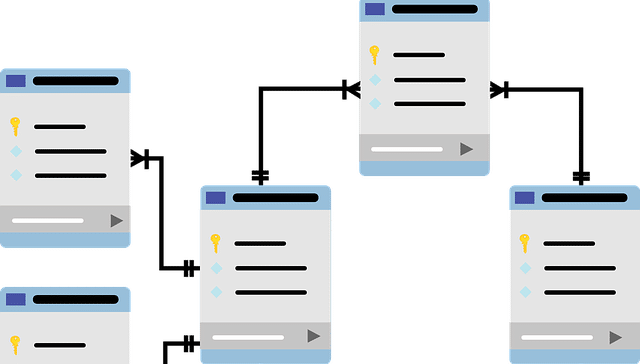
You’ve refined your Facebook ad copy. You’ve selected the best images and fine-tuned the visual design of your advertisements. But, the leads just aren’t rolling in. Frustrated, you toss your hands into the air and blame Facebook for your, seemingly, wasted advertising dollars.
But, wait, before you give up, answer this question:
Did you write according to what your audience truly desires, or what you *want* them to desire?
Unlike traditional digital advertising platforms, the power of Facebook isn’t the sheer number of users. Rather, it’s the intimate connectivity offered by this social media powerhouse. As untold advertisers have already experienced, sparking the flame of intrigue requires more than catchy copywriting and well-timed ad rollouts.
Facebook serves as a unique resource for its users. Therefore, to attract leads and expand your brand awareness, you must approach advertising methods in an equally unique demonstration of linguistic awareness and social understanding.
Refining your Facebook ad target audience requires more than reviewing a spreadsheet and basing marketing efforts on a broad demographic overview. But why? What are the psychological elements responsible for this unprecedented level of B2C communication?
While the answer is multi-tiered, the fuel of this dynamic platform boils down to intent.
Deciphering Intent – Decoding Audience Intrigue
Let’s compare Facebook advertising to another giant in the digital marketing realm: Google.
When users open their browser and input their search terms in Google, they do so with intent. They hold a relatively solid understanding of what they want. While there are some who arbitrarily browse the endless array of websites, 99.9% of Google users use this platform to find answers or solutions for a specific topic.
So, what does this mean for advertisers? Essentially, everything.
Intent-based advertising, such as PPC campaigns, are driven by the intent of users. This marketing initiative thrives by isolating the specific desires of target customers, who are already primed to read what you offer (as long as it matches their, you guessed it, intent).
The top reason Facebook ads fail isn’t because they’re terrible. In fact, most of unsuccessful Facebook ads would perform quite well on another platform. Unfortunately, failure rings loud among many advertisers as they approached this platform with intent-based models.
Since intent-based advertising falls flat, how do you stimulate connections with your target audience?
You must switch your advertiser brain away from user-driven (i.e., relying on their expressed intent) and into the realm of user intrigue.
While many call this form of advertising interest-based, intrigue-based is more accurate. Rather than wait for your target demographic to actively search for a related topic, intrigue advertising involves:
- Identifying Target Demographic Lifestyle/Personal Intrigues
- Crafting Ad Copy Specifically to Their Intrigues
- Offer Value-Based Content
Seems easy enough, right? You’re right. It isn’t rocket science. However, the only way to truly accomplish this profound methodology is via target audience study.
Until you’re well-versed in the various topics, linguistic preferences and visual triggers specific to your demographic, intrigue-based advertising suddenly feels like sitting for a calculus exam when you’ve prepared for a geography quiz.
At this point, you’ve likely performed at least some research into the personalities and buying habits of your target audience. This is an excellent start. However, it’s only the tip of the iceberg. While creating and sustaining a successful campaign on Facebook requires more legwork than you may realize, the payout of your time investment is unprecedented.
Without further ado, let’s dive into the proven methodology of identifying, refining and targeting your perfect Facebook ad audience.
Tip #1 | Create a Targeted Buyer Persona
If you’ve spent any time dealing with digital marketing, this tip is already solidified in your mind. However, its importance makes it worth mentioning.
Successfully advertising, on any platform and in any medium, reaches profitability by speaking with your audience, not at them. While there are many copywriting tactics designed to accomplish this task, the cornerstone of B2C relations is understanding your buyer.
Few techniques are as powerful as crafting a personalized buyer persona. Essentially, this methodology forces you to understand the various intricacies of your ideal customer. Rather than saying, “They want my product because it solves a common problem,” completing a buyer persona profile allows you to narrow your marketing intentions by saying, “They need my product because it solves XYZ and solving this problem make them more productive and saves money over time.”
In essence, a buyer persona transforms the millions of unknown customers you wish to reach into a real, living and feeling person. Gone are the days of soulless advertising. The digital age has cultivated an intense level of personalization, which internet users now demand.
Creating a buyer persona can be as complex as you want. However, if you don’t have time, or aren’t sure where to start, begin by answering these three questions:
- What is their typical day like? Do they go to school, work or both?
- What joys and struggles do they have in their life? And how does your product/service play into them?
- What problems do they want to solve? What can you do to help solve these problems?
Of course, there are literally hundreds of other questions you can ask to build a more complex buyer persona. If you’re interested, take a moment and read this informative guide offered by the Digital Marketing Institute. It’s filled with wonderful tips to take your buyer persona profiling to the next level.
Tip #2 | Facebook Audience Insights – Affinity Filtering
Have you used the Facebook advertising dashboard, but only found it lacking information and helpful audience clues? While it’s no secret the Facebook ad dashboard is relatively basic, if used properly, it can prove quite useful.
When using the Audience Insights tool, don’t think of it as an all-inclusive dictionary of your audience. Rather, use it as a springboard to propel you into deeper, more niche-focused, research. One of the coolest features of the Audience Insights tool is to filter search results by “Affinity.”
Essentially, this tool allows you to compare overall interest for your topic based upon the interests of the entire Facebook universe. Take some time and play around with this tool. While you may not find it as helpful as you’d wish, the Affinity filtering does help narrow topics and can guide you throughout brainstorming sessions.
Tip #3 | Google Related Topics for Detailed Analysis
During your Facebook ad research, do you strictly stay within the platform? If so, then you may be losing out on vital bits of key information. While this may seem like a no-brainer, turn to Google during the research phase.
One of the most effective ways to harness the power of this search engine giant is to Google related topics for your audience. For example, search for blogs, brands and associations that are related to your umbrella topic.
From here, access their Facebook fan page. You can use this information in several ways:
- Deepen your understanding of niche-specific linguistic patterns (speak as your audience speaks)
- Create a detailed list of fan pages and topics you can target with your ads
Tip #4 | Stalk Your Ideal Customer (not in a creepy way)
One of the beautiful aspects of Facebook is its ability to showcase intimate details about your ideal customers without having to actually communicate with them. This passive research tactic offers excellent insights into what pages they like, what topics they’re talking about and what interests they have.
When you find a fan page an ideal customer likes, go to that page and see what they talk about. What information is being shared? What level of communication do they release? Are there any “problems” you can identify and assist with in your own product and/or service?
Do this for as many potential customers you can. While time-consuming, the payout of this deep-level research can pay out significantly.
Tip #5 | Ad Suggestion Tool for Dynamic Research
In your Facebook Ad dashboard, open the “Power Editor” or “Ads Manager.” From the research you performed in the first steps, input an interest topic into the search box. Make sure to only input one interest at a time.
From here, you’ll be shown a list of suggested interests. Write these down and use them as part of your audience refining tactics. This information gives you a more detailed view into related interests and potential pages to target with your ads.
Tip #6 | Piggyback on Google Campaigns
This is an excellent way to gain another passive view of what websites and topics your audience visits. To utilize this tip, simply create a Google ad campaign and target your ideal demographic.
From here, you can see what sites your audience visits after they go to your site. This can help create a more robust mental blueprint of what your audience finds interesting, how they navigate the internet and potential related topics you can target.
Many successfully Facebook advertisers utilize this method when retargeting those who have already came to your site. By utilizing insights derived from a Google campaign, you can piggyback upon the information that attracted them from Google and translate this into Facebook intrigue-based advertising.
Tip #7 | Search Facebook for Niche-Specific Posts
While this may seem like another surface-level tip, few search engines and techniques offer such detailed insights into your niche as simply searching for topics within Facebook. Perhaps the greatest benefit of this technique is its ability to provide you with realtime niche interest tracking.
Simply log into your Facebook account and search by topic in the main search bar. Many find this technique useful when performing competitor research. By typing in the name of your competitor, you’ll get a birds eye view into what your competitor is doing to connect and communicate with your shared target demographic.
While this information may make it easy to simply copy their technique, this is a guaranteed way to ruin your reputation and come across as just another online business. Instead of using a competitor as a blueprint, use this information as a way to separate yourself while sustaining the topic of interest.
In the realm of Facebook ads, individuality really is key to overwhelming success. Never forget this!
Tip #8 | Ad Copy Phrasing
When crafting ad copy for intent-based marketing strategies, you’re essentially selling your idea, product and/or service. While this works great within that specific realm of B2C communication, Facebook is an entirely different world.
The biggest mistake so many beginner Facebook advertisers make is framing their copy along the same lines as they would a PPC campaign. Not only is this hurting your brand in the eyes of social media users, but in some cases, it can prevent your ad from going live.
Follow these simple rules when crafting ad copy:
- Don’t write any part as if it’s an advertisement. Rather, craft your copy as an advertorial, which is, an advertisement that gently discusses your business while offering factual, useful and interesting information as the fuel to ignite intrigue.
- Avoid sales language. Seriously, don’t do use it. Think of Facebook ads as a blog designed to provide information that’s hyper-targeted to your audience. If your ad reads like a desperate plea for money or attention, you’ll receive the opposite in return.
- Be creative with your topics. Utilize the in-depth information you’ve gathered during research. Compile your notes and craft topics and linguistic choices based upon what your audience finds interesting. When dealing with such an intimate advertising space, personalization and human-to-human connectivity is paramount.
Tip #9 | Find Related Topics via Wikipedia
Whenever a Facebook advertiser begins utilizing Wikipedia as an audience research source, many feel as if they’ve uncovered The Fountain of Youth. This publicly curated knowledge database is a treasure trove of not only information, but also uncovering related topics.
Once you arrive at Wikipedia, search your umbrella topic. From the main topic page, scroll to the bottom and be prepared to take notes. Underneath the heading “See Also,” you’ll uncover a laundry list of general topics, related fields and main topic points.
While the untrained advertiser may find this information relatively useless, to the refined audience research marketer, this information opens an entire new world of possibilities.
Take note of these related topics and return to Facebook to continue your Audience Insights and fan page research. You’ll likely uncover an entirely new realm of targeting opportunities.
Tip #10 | Amazon Product Reviews Reveal All
Creating a connection with your target audience is the founding principle of Facebook advertising success. However, this is much easier said than done for many marketers. This is especially difficult if you’re primary goal isn’t to attract subscribers or offer a service, but rather, sale a product.
Unless you’re one of the few who have a 100% new and unique product, you have competitors. Want to piggyback on the success of your competitor without stealing their ideas or copying their tactics? Simply turn to Amazon.
Search Amazon for a product that’s comparable to the one you’re selling. Skip the product descriptions and head right for the reviews. Read as many reviews as possible for as many product variations and related products. Why is this important? Let’s discuss a few main reasons:
- Identifies why a customer wants your product. Reviews offer detailed insights into not only how a product works, but the reasons behind their decision to purchase a specific item.
- Clarifies customer expectations of product. In many cases, a negative review isn’t because the product was defective. Rather, it’s because the product failed to meet customer expectations. Through careful ad copy, it’s possible to navigate audience expectations of how a product works and what to expect from its use.
- Highlights unforeseen benefits. While you may be aware how your product benefits users on a general scale, reviews offer a glimpse into unexpected benefits.
So, what do you do with all this information? You use it! While refining your target audience, take a look at how experiences and expectations from competitor reviews can apply to your offering. For example, if an unforeseen benefit is discussed, take this benefit and use it as a tool to further segment your target audience.
Tip #11 | Focus on Smaller Niche Groupings
When you have access to hundreds of millions of potential customers, it’s easy to fall into the trap of blanket advertising. In essence, this term refers to blanketing a large demographic with your ads. Makes sense, right? Casting a wide net catches the most fish?
Unfortunately, this isn’t exactly true. If you truly want to catch not only a high number of fish (or customers), but also the meatiest, you must concentrate your efforts.
While there’s really no right or wrong, if you look at the success rate of top performing Facebook ad campaigns, they each have a common thread: segmented target audiences.
Rather than blasting your ad across the screens of millions, perform the work and target no more than 150,000 users. Some marketers find even greater success by narrowing their audience size even more to reach anywhere from 75,000 to 100,000 users.
Why should you do this? Let’s see…
- Narrowed audiences reflects your deep-level research. It’s easier to speak the language of a small, niche demographic than a broad collection.
- Refined linguistic patterns for a specific region and/or audience. As mentioned earlier, success on this platform is all about communication and speaking the language of your ideal audience. This is also impossible if you’re targeting hundreds of thousands in a single campaign.
- Greater access to analytical data. By zooming into smaller groups, you achieve clearer views into the success of specific ad campaigns. Ultimately, this increases success rates for all your campaigns as you’re given multiple insights from a variety of resources rather than one giant analytical view. Precision is paramount, never forget this.
Software Management – Leverage Facebook Audience Refinement
While there’s literally hundreds of other tips and techniques you can apply to refining your Facebook ad target audience, the aforementioned offer an exceptional pathway to success. Of course, performing these tasks can quickly become overwhelming.
Whether you’re a novice, or an experienced marketer, you shouldn’t rely solely on your skills. In the ever-evolving realm of social media, maintaining equilibrium is easier said than done. Because of this, the most notable players in this game utilize Facebook ad management software to streamline research tasks, optimize ad campaign components and organize their current and future tasks.
Herein lies the biggest tip: don’t rely on Facebook to manage your campaigns for you. While it’s a solid base for basic functionality, if you’re serious about the success of your efforts, leverage your work with a proven, fluid and stable ad management software.
As you browse software solutions, choose one capable of supporting and refining your campaigns from multiple angles. An excellent example is The Campaign Maker. This centralized software offers four tools to create, report, optimize and analyze literally every element of your Facebook ad campaigns. While there are other offerings, few deliver the scope of service and detailed insights as this unique (and affordable) option.
Above all else, Facebook ad campaign success depends on you. While learning the tricks of this trade is complex, through determination and software assistance, you’ll soon understand why Facebook is among the greatest digital advertising spaces for any industry.

